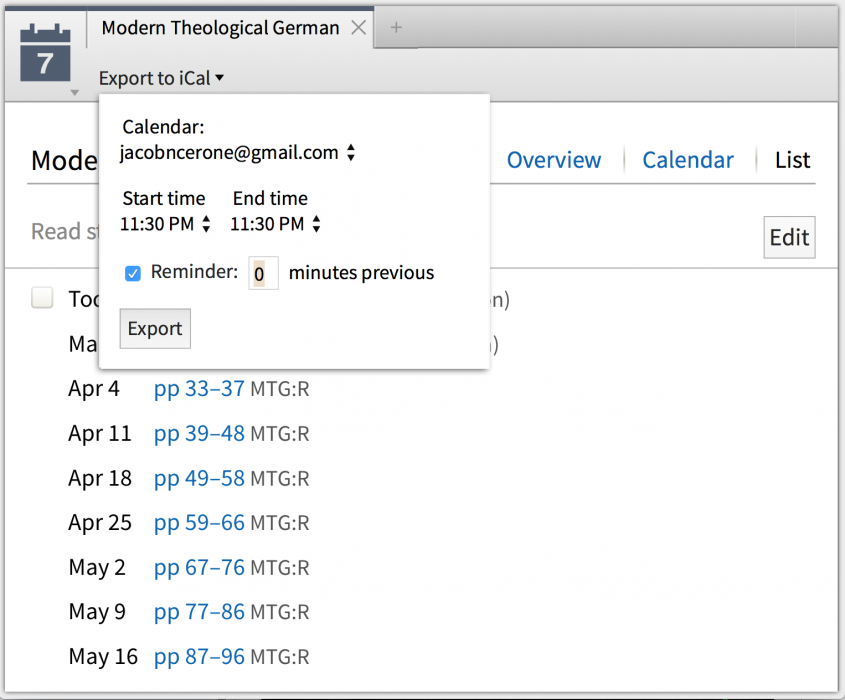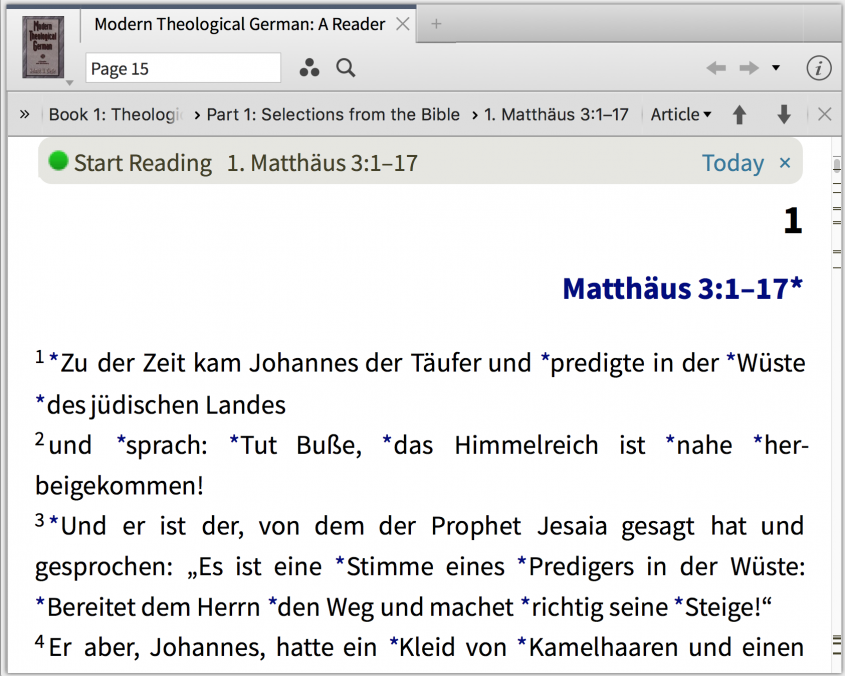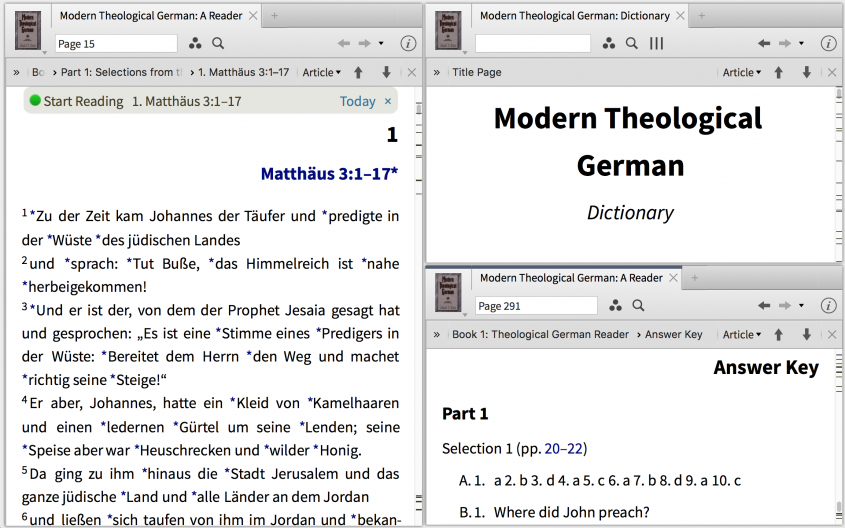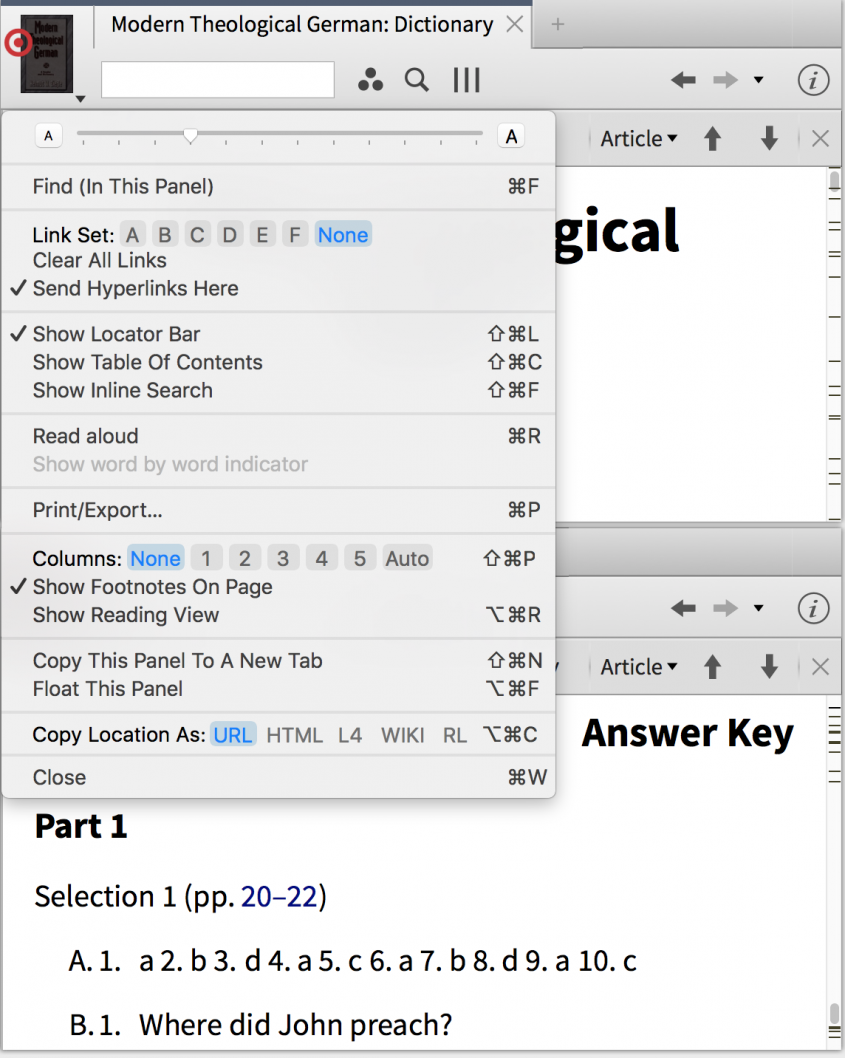Learning a new language—whatever language that might be—takes time and effort. To read German is no different. Some might even say that certain features make it a more difficult language than others. This is partly due to the fact that German is an inflected language; it has a host of irregular verbs, the gender of nouns is not readily apparent from their endings but must be memorized, and there are those tricky issues of verb placement and separable prefixes.
Thus, German is the bane and solace of many biblical scholars of whatever subdiscipline.
Actually, that statement needs qualification. For those scholars and students who have little to no familiarity with German, learning to read this modern language is a challenge. German scholars often have the advantage of learning English as schoolchildren. But for Americans, Brits, and others native English speakers, we often have a challenging road ahead.
So we need help to master German, or we miss out on a huge part of the conversation over the Bible that has been happening since at least the Reformation (and those guys mostly wrote in Latin; yep, you might get to learn that one, too). Indeed, legitimate research without engaging with German theologians is, well, illegitimate.
Essential resources to read German
Because German is such an important modern research language, most PhD hopefuls and candidates know well Helmut Ziefle’s Modern Theological German: A Reader and Dictionary. Ziefle’s work provides a natural segue from acquiring the language through grammars, such as April Wilson’s Learn German Quickly or Hubert Jannach and Richard Alan Korb’s German for Reading Knowledge, to the rudimentary ability to translate a passage.
What better way to develop a biblical or theological student’s ability to read German than introducing her to familiar excerpts from the Bible and famous theologians? Ziefle’s reader does just that.
As a reader, Modern Theological German curates individual texts and supplies novice readers with definitions for terms or idiomatic phrases they have probably not yet encountered. At the conclusion of each excerpt, Ziefle tests reading comprehension and understanding of grammar with multiple choice questions and sentence translations. Included in the back of the volume is an answer key for all the exercises as well as a handy dictionary for reference.
The reader, dictionary, and answer key make this one of the friendliest tools available to students of theological German. But in my own studies, I’ve found that owning this resource in Logos Bible Software can make it more accessible if you commit to the following three suggestions.
Schedule it
First, I’ve found that a regular study schedule is crucial for obtaining and maintaining a new language. Weekly, if not daily time spent translating and reviewing vocabulary is imperative. And with Logos, I can create a reading plan for Modern Theological German that will sync with my calendar and remind me exactly when to start the next lesson. (You can access my reading plan by joining the Faithlife group Modern Theological German.)
If you don’t like to clutter up your calendar, you don’t have to use the “export to iCal” option. Instead, check the Logos homepage once you’ve created the reading plan and simply click on your next reading.
Once clicked, Logos will open the resource to precisely the scheduled reading and indicate where to start and stop.
With a schedule in place, I can get to work every day right away.
Lay it out
One thing I thoroughly dislike about working with print copies of a language grammar, reader, or workbook is the constant flipping of pages. Flip to the back to check the dictionary. Flip back to the spot I’m working on. Then check my answers in the back of the book. Oops, lost my place. More flipping to find it. Ugh.
But with Logos, I can open multiple copies of the same book, which means I can have the reader, dictionary, and answer key open all at once.
To do something similar with the paper copy of Modern Theological German, you would have to rip the book up into three separate parts, lay them side by side, and hope you don’t lose any pages in the meantime.
Hyperlink it
The last thing I love about Modern Theological German in Logos is the “Send Hyperlinks Here” feature.
When enabled, double-clicking a word within the reader will tell Logos to look first in that dictionary before going any where else in the software. It saves loads of time, which is perhaps the most valuable resource of all for any biblical scholar (much more valuable than German, certainly).
With these simple features, I’ve been able to hone my ability to translate German without the frustration of missing a scheduled reading or the repetitive and time wasting tradition of keeping my place as I flip back and forth, back and forth within the volume.
If you’re a biblical or theological student learning German for a PhD program—or just because German is an essential language for serious biblical and theological research—this is an excellent resource made better in Logos that will strengthen what you have learned and give you confidence in your studies.

An earlier version of this post was originally published on Jacob’s blog, ἐνθύμησις.









